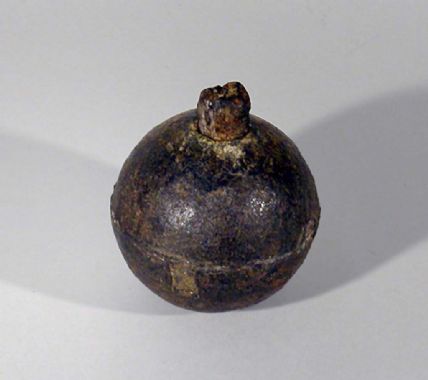As COVID-19 deaths spiked in 2020, Suzanne Firstenberg’s public art installation "In America: How could this happen…"
History Explorer Results (13)
Related Books (4)

Grade Range:
K-12
Resource Type(s):
Artifacts
Date Posted:
4/16/2018
This rare silk banner was probably carried in a public parade in Philadelphia in the mid to late 1790s. Its elaborate design suggests the importance of such festivals, which provided a place for many Americans, voters and non-voters, to express patriotic sentiments or partisan views on current ev

Grade Range:
3-12
Resource Type(s):
Reference Materials
Date Posted:
3/26/2018
Following independence, citizens of the new nation sought to forge their own identity and create a unique history. They established holidays such as the Fourth of July and later Thanksgiving Day and chronicled the story of America from the landing at Plymouth Rock through the Founding Fathers and

Grade Range:
K-12
Resource Type(s):
Artifacts
Date Posted:
2/1/2017
The Smithsonian’s National Museum of American History recently acquired at auction a rare 18th-century silver milk pot or creamer with engraved with symbols and an inscription that support the American colonists’ ongoing boycott of imported goods, especially tea, during the months following a
Grade Range:
3-8
Resource Type(s):
Reviewed Websites, Primary Sources, Lessons & Activities
Duration:
90 minutes
Date Posted:
10/11/2016
This historical investigation is aligned with the C3 Framework and is from C3teachers.org.
This fifth-grade annotated inquiry asks why countries declare their independence. As an integral ea

Grade Range:
4-12
Resource Type(s):
Artifacts, Primary Sources
Date Posted:
6/11/2014
This teapot was made in England about 1766-1770, possibly by the Cockpit Hill Factory, Derby, England. Inscribed on one side of the teapot is “No Stamp Act” and on the other is “America, Liberty Restored,” both within flowerheads and stylized scrolling leaftips in black. The cover is pain

Grade Range:
9-12
Resource Type(s):
Interactives & Media
Date Posted:
11/14/2013
Get Revolutionary access to Smithsonian objects with the 3D Charter Collection. In this tour, take a close look at the Gunboat Philadelphia, a warship sunk in Lake Champlain in 1776. Students can rotate, expand and control their own explorations of this unique artifact. The tour includes historic

Grade Range:
5-12
Resource Type(s):
Artifacts, Primary Sources
Date Posted:
12/15/2010
On October 28, 1774, the Rhode Island General Assembly chartered the Newport Light Infantry as a voluntary association of local citizens. These citizens wanted to form a company to obtain better military training than the colonial militia provided. The infantry, 100 strong, demonstrated its patri

Grade Range:
5-12
Resource Type(s):
Artifacts, Primary Sources
Date Posted:
12/15/2010
Grenades of this type played an important part in the biggest naval battle of the Revolutionary War. The Bon Homme Richard under the command of Captain John Paul Jones entered into a battle with the British ship the Serapis. The Serapis was a much faster and heavier shi

Grade Range:
5-12
Resource Type(s):
Artifacts, Primary Sources
Date Posted:
11/30/2010
This artifact is one of three known surviving components of a suite of four, and possibly five, colors carried by the Second Regiment of Continental Light Dragoons during the Revolutionary War. Although no definitive order has survived specifying the number of colors to be carried by a regiment o

Grade Range:
K-12
Resource Type(s):
Artifacts, Primary Sources
Date Posted:
12/30/2009
George Washington wore this simple hanger as his battle sword while serving as commander of the Continental army during the Revolutionary War. Made in Fishkill, New York, by John Bailey, an immigrant cutler from Sheffield, England, the sword has a slightly curved, grooved steel blade, silver-moun













